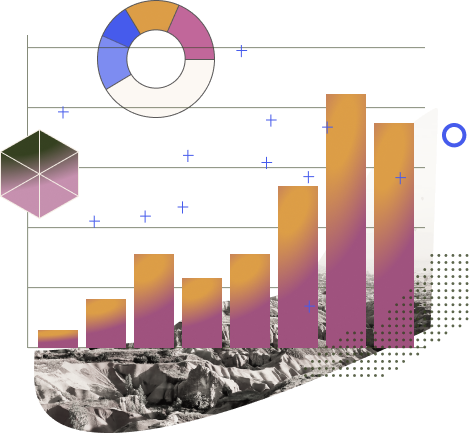Kevin Gawronski of Gawronski Media shares a step by step guide for choosing the right digital marketing agency and having a successful engagement with them. Kevin has deep experience in digital marketing for emerging Food and Beverage (F&B) and Consumer Packaged Goods (CPG) brands based on his experience with 100’s of brands including Gatorade, PetSmart, Porsche, AutoZone, and Cracker Barrel.
Step By Step Outline For Successfully Using a CPG or F&B Digital Marketing Agency:
- Determine your strategy as a brand. Is it profitability, market share, opening new markets, competing with another brand, or something else?
- Model out your unit costs so that you know your gross margins. Then use this information to determine the amount you can spend to acquire customers to stay in line with the strategy you’ve settled on.
- Determine internally how much cash you are willing and able to spend and over what time period in order to accomplish the strategy.
- Prepare investors, partners and other stakeholders on your team to have an experimental mindset and assure them the experiment has a limited downside that’s already been agreed upon.
- Get references from digital marketing agencies you want to work with – don’t be fooled by buzzwords like optimization, lookalike audience, and re-targeting. Make sure they have experience working with products like yours.
- Avoid the “pay as a percentage of spend” model to prevent conflicting motives.
- Agree to performance targets but be aware that digital marketing is part art and part science.
- Over communicate with your digital marketing agency weekly so they can continue to mine your experience for new insights to drive performance.
Interview:
Chris: Kevin, can you tell us a bit about your experience in digital marketing for CPG and Food and Beverage brands?
Kevin: I have been in marketing for a long time and I got my start with some huge brands that allowed me to experiment with large budgets. I was able to get into digital marketing and run a lot of tests and learn a lot. Ultimately, I ended up leaning into Food and Beverage brands. I am a creative person and I really like all the different ways you can grow a Food and Bev or CPG brand. You can get involved in paid and unpaid social in unique ways to grow your audience and customer base. I also really like the people who start Food and Bev brands. On average, they have great intentions and are really passionate about the product they have created. They want to bring it to life and take it to retail but they don’t know how, and they shouldn’t have to know how to take their product to market.
Chris: What’s specifically interesting about Food and Beverage brands in terms of marketing?
Kevin: The people who create these products tend to have a really interesting and relate-able story for why they came up with their idea. That relate-able story can make for really good content and copy and makes finding avatars and audiences a bit easier. The other thing about Food and Bev is that it’s a great space to be in right now. There are so many more people that are willing to try a new brand as they walk through the grocery store because they heard about it online. People are also ordering a lot of food and beverage products on Amazon, which is a huge opportunity. I think all F&B needs to be doing some sort of paid digital because it’s such an efficient way to get in front of consumers if done right.
Chris: What does it take to be a CPG or Food and Bev marketing expert instead of a generalist marketer?
Kevin: Well, Food and Bev and CPG online is very much an eCommerce style marketing strategy. It’s very cut and dry. The sales your getting in return for the cost your paying for those sales is the whole game. You also have to pay close attention to the gross margins of the product that you’re selling and work with the brand to make sure that the customer acquisition cost for that newly earned revenue is worth it. This is why it’s such a great solution for brands that are trying to run as lean as possible. The early focus on digital marketing for F&B and CPG is about conversions. It’s a simple equation. You know exactly what you are getting for what you are spending.
Once the brand gets larger, you have to start moving up the funnel towards awareness campaigns with much less clarity of Return On Marketing Investment, also known at Return on Ad Spend (ROAS).
Chris: Can you explain the differences in marketing between CPG and Food and Beverage brands?
Kevin: Generally, for CPG brands, the Direct To Consumer game is a bit easier. You don’t really have to map out where people could be. They are obviously going to be going to Amazon to look for deals on your type of product. But CPG non-food brands are much more likely to buy directly from your website than Food and Beverage. The F&B brands deal with a customer journey where so many people are going to see an ad online but end up purchasing at the grocery store. However, we are seeing a lot of people buying groceries on Amazon, so we are seeing a lot more F&B brands moving on Amazon with great returns and a customer journey that looks more like CPG (meaning less awareness and more conversion ads).
Chris: As small business consultants, we often end up walking through buyer’s journeys. Can you talk through the buyer’s journey of Food and Beverage with digital marketing?
Kevin: So you put an ad up for a food or beverage product. There’s a pretty good chance that I’m not going to buy it the first few times I see it. But, if I’m the average consumer, I’m going to end up at the grocery store at least once a week! This means that my marketing should focus a bit more on trade spend promotions and awareness so that when you get to the grocery store, there is a chance our brand pops into your head when your walking through the aisle we occupy.
Chris: Can you tell me more about the process you work through to understand a brand enough to prescribe a digital marketing plan?
Kevin: Well, I have to start by saying I really don’t like digital marketers who don’t care about the brands they work with. They just prescribe the same solutions to you regardless of your brand position, your audience, etc. They just go straight into look alike audiences and technical aspects of digital marketing.
The first step is understanding the brand. Who are you? What limitations do you have, like shelf life? What have you done before from a marketing perspective? How long have you been around? What is your product supposed to represent? After you really understand the brand, the team, and their goals, that’s when you can start getting into the more technical aspects of digital marketing.
Before any sort of prescription though, we have to look at your entire history of digital marketing. Where are you present online? Do you sell on Amazon? Have you run paid social ads before? What have been some historical Paths To Purchase? Have you ever worked with any content writers or influencers? Do you have customers that are repeat? Do you have customers who haven’t bought in a long time? What is your customer lifetime value? We are basically data mining your historical marketing performance
After we understand everything we can historically, we should be able to answer questions like, is this more of a DTC brand or a better fit for awareness campaigns to Amazon, a grocer, or a retailer? What channels should we be on and which channels should we test? Which ones should we amplify?
Then, we can do the technical stuff that a lot of digital marketers use as buzzwords to sell their services: on page optimization, keywords, page speed, pixels, etc. All this stuff isn’t as useful if you don’t really dig into the questions like: Who are the consumers that you think are going to buy your product right now? What are their behaviors and interests that we can leverage right away?
What’s so interesting is that there are some brands who have been around for a long time and they just aren’t aware of how much data exists about their customers that is available to them if they bring in someone who knows how to access it.
Lastly, it’s about constant communication with the client. We have to set proper expectations from an ad spend and timeline perspective.
Chris: What are proper expectations for results from a digital marketing agency?
Kevin: When we first start setting up campaigns and testing, we are probably going to target something like a ROAS of 1 in the first month. In the second month, we are shooting for a ROAS of 2-3. And from there we are trying to getting higher and higher as we get more data. However, for CPG and F&B, you can often get ROAS of 3 on Amazon in the first month and up to 5-7 in the second or third month. It’s a huge opportunity. The client should also expect weekly reporting that shows progress and results. We like speaking with clients weekly because occasionally, they will drop some information that gives us a huge lead on digital marketing efforts. They may mention that some huge influencer mentioned their product a while ago and they just forgot to tell us, or we couldn’t find it in search.
From a timeline perspective, if you have the assets already we can get started really quickly but if we need to take photos, do some video work, we can usually get up and running with our first experiments within a month and a half.
Chris: Can you explain some common mistakes clients make with digital marketing?
Kevin: You have to look at your Path To Purchase. If your website looks terrible, you can have great ads and traffic but not convert anything. If your ads look like they were shot on an Android 6 years ago, your ads aren’t going to convert. First impressions are everything, so we prefer to have the entire funnel or path to purchase optimized and looking brand-worthy before we start making first impressions with new consumers.
Chris: Being a small business consultant in Austin means we work with a lot of F&B and CPG brands. The big metric a lot of them use as drivers for their business is ad spend multiplied by average trailing Return on Ad Spend. Unfortunately, this number is calculated differently by different companies. How do you calculate Return on Ad Spend (ROAS)?
Kevin: We focus specifically on revenue that is generated as a result of the advertising spend. We don’t factor in their cost of production. We ask them to come up with the acceptable acquisition cost based on their gross margins. We want them to give us guidance on whether the initiatives we are targeting are profitable or acceptable for the strategy they have set at the leadership level. Some brands are looking to target profitability and others are just looking to get a ton of volume and market share. Our job is to take that guidance and apply it to our digital marketing strategy.
Chris: Is there a price point below which it doesn’t make sense to do digital marketing for a product?
Kevin: On paid social, the answer is yes. On Amazon, it’s a different story. If we are working with a brand with a lower price point, we need to really scrutinize if the acquisition cost is actually worth it in terms of gross margin dollars. Often times, the first back up plan is to bundle the product so that we can increase the average order value. If that’s not possible, we’ll let them know and explore other options. Often, if we can’t get the order value above around $15-$20, we won’t be able to do profitable digital marketing strategies. This is still acceptable if you’re looking to break even or drive awareness and in the long term. If you can create loyal customers, then the LTV will catch up and make it worth it.
The other strategy with these brands with lower cost products is to do a combination of paid social where we can usually break even but use that to drive awareness over on Amazon. If done right, you can get a ROAS of 1 on paid social but get a ROAS of 4-5 on Amazon assuming you aren’t some super obscure brand and there isn’t a brand that dominates the category.
Chris: Why will the ROAS on Amazon be so much higher?
Kevin: It’s in the Path To Purchase. A lot of times, people will see your product on paid social and then end up on Amazon looking for a deal. You do all the branding right on paid social, but they go to Amazon anyways. Some brands end up relying on Amazon for profitability and paid social for awareness.
For example, let’s say I’ve been going to the gym and I just ran out of protein powder. I go on Amazon to search for protein powder, and if we did a good job, we are going to get in front of you so many times that when you pull up the options, our brand catches your eye, and we lead with a unique differentiator. Most grocery shoppers on Amazon are not brand loyal, so if we build familiarity before you make your next purchase and we show up in the options for X type of protein powder, we’ll probably win that sale.
Chris: There has to be a downside to relying on Amazon for sales?
Kevin: First, Amazon is all a play on words game and a big brand like Kraft or Coca Cola can come in with another brand and dominate the keyword that was driving all your revenue. Second, you don’t build a brand on Amazon; it’s a revenue play only. You aren’t engaging an audience, you aren’t gathering email addresses, you aren’t building a following. All you are doing is getting keywords in front of consumers at the right time. You will get referrals from people that buy but you have no control over that process. This is why you have to do both – you have to drive revenue at Amazon, but you have to do paid social to grow your audience and build your brand.
Chris: You’ve mentioned the Path To Purchase. Can you tell us a bit about that?
Kevin: It’s the customer journey. It’s the journey from first impression of the brand until an actual purchase is made. It applies to everything in marketing from TV, to paid social, to search. We like to start at the end of the journey, saying, ok, anyone can buy my product at Amazon, or on my website or in the grocery store. Then we like to ask, “how do we get in front of the right people who we’re assuming are the most likely to buy our brand? How do we get them all the way to purchasing on the first impression? For F&B brands that are going to be selling in grocery stores, it’s easy to observe that only people within a certain distance are going to drive to the grocery stores that carry our product. Then we can add in filters like age, interests, etc. and serve them ads that tell them that our product is being sold in the Whole Foods Grocery Store in their neighborhood.
Once you serve them their ads, you’ve made the first impression and started the Path To Purchase or the customer journey. Now we are thinking about how to follow up with that impression. Do we send them an article that we are in that highlights our product? Do we send an ad from an influencers handle? Do we send them another video ad? It could be that we serve them anywhere from a few to dozens of impressions. The whole time, we are reminding them that we are at Whole Foods and you can buy our product there. Eventually, you end up at the grocery store (once a week, usually), and eventually we might convert you.
Chris: Do you have a perspective on ad targeting you’d like to share?
Kevin: First, we are huge fans of really dialing in the avatars so that we can layer on interests and demographics that we think will make for really targeted audiences. Second, we would rather serve impressions up to the right person at a higher frequency than to a broad audience at a lower frequency. We see a lot of brands make the mistake of getting this backwards.
Chris: What is the best way to vet a marketing agency like yours?
Kevin: I tend to think most agencies are overpriced and have a lot of overhead that needs to be covered. I saw agencies that were ripping off clients to keep the lights on. And they would over promise to clients. I like to be upfront that this stuff doesn’t always work according to plan. I often run at a discounted rate for the first few months while I’m getting things set up and testing. I think you should look for an agency that has experience in your vertical. You shouldn’t be paying for them to research and learn your industry. As I work with more CPG and F&B brands, the more I learn. Your agency should know that once you get on a shelf at a grocery store, you only get one chance to sell through. If not, your done. I am biased towards smaller agencies like mine that have less baggage and have clear roles and good communication without bureaucracy. You should also make sure that you don’t get sold by a high-level exec and then have the work farmed out to someone who just graduated with no experience.
Chris: If I’m a CPG or F&B brand and I want to work with you, how much cash do I need to budget for fees and ad spend and how long before I can count on gross margin dollars coming back in to feed the machine?
Kevin: There is a perverse incentive with agencies that charge as a percentage of spend. You’re going to see a lot of agencies with that model pushing for more spend early on for tests and statistical significance. We don’t charge that way because we want to spend as little as possible to validate early experiments. But to answer the question, it depends on the number of markets that you want to hit. We are probably going to need a few months of spend so we can hit a certain number of the “right person”, X amount of times per month, with 10-15 different messages. Generally, by the third month, they see us enough that they want to try the product and will have gone to the store (for F&B) X times.
What can help business owners that are new to digital marketing, whether they are a new or old brand, is doing all that research up front on the Path To Purchase, the persona work, etc. Then we can do a much better job of forecasting what we think we’ll need to spend in our first few months to get in front of enough people to see if our ads our working.
Chris: What should a company be clear on before they engage with a digital marketing agency like yours?
Kevin: I want to say that everything is relevant and important but if I had to pick, it would be three things: What are your goals, what do we need to acquire customers for to be in line with those goals (profitable vs market share vs break even), and how much budget is available to spend to accomplish these goals? Knowing these things will drive the strategy. If you need to be profitable, we can’t do much awareness work, it will all be conversion. Or if there are some struggling stores you want to do better in, that’s a different strategy and reach.
The other thing I’d suggest is that sometimes campaigns take a few months to really get good feedback. If you have investors or a CFO, they are going to be putting pressure on you to show results. You need to prepare them and train them on this process so that they understand that results in the first month may mean sales, but it also may be that we have honed in on the right audience and the top of the funnel is performing better than at the beginning of the month.
Announcement: If you seek a community of other business owners looking for ways to build a self sustaining business for themselves, join our Facebook group: Building A Business, Not a Job.



